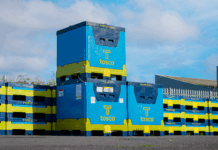In such difficult operating conditions, beverage processors are well aware of the importance of reliability and short machine cycle times. Dan Rossek, product marketing manager at Omron, examines the benefits of using vision systems for inline detection.
VISION systems can be used throughout the production process as a cost-efficient and dependable solution when inspecting the exterior quality of products and packaging.
As a quality control measure, they can be utilised to inspect empty containers, before the actual filling process, or for final exterior quality inspections such as labels and booklets – or to detect the presence of straws, for example. The final exterior inspection is therefore often integrated into a final inspection station incorporating other technologies for a complete quality control solution.
Because of this flexibility, vision systems are generally used for higher value products, for example, verifying serialised 2D codes on labels to fight counterfeits. In a recent project, this feature enabled counterfeit bottles of cheap wine labelled as expensive Italian wine to be successfully detected.
ADDRESSING DETECTION HEADACHES
However, depending on the process and application, there are a number of hurdles to overcome in terms of technology and cost. For example in high speed processes, where the detection and image processing speed is critical. In other applications having several inspection points on a bottle demands the use of multiple cameras – pre-processing these different camera images into a single image for evaluation can be crucial for some manufacturers. A third aspect often raised is the required flexibility to adapt inspection to different sizes, containers and marketing programmes.
Price pressure is a significant hurdle as well and has generated two different trends. While a part-cost reduction is a common approach, there is also the need to evaluate the overall task and measure the cost improvements, taking the total Cost of Ownership (TCO) into consideration.
Adopting the latest technical developments, beverage manufacturers can overcome current inspection challenges. Using parallel hardware architecture, image acquisition and pre-processing speeds have been improved, plus software image processing speeds have increased by using new algorithms.
Using technology features such as the ‘sparse edge’ detection feature and variation prediction allows fast, precise measurements to be made even if images are out of focus. Furthermore communication speeds to databases, PLCs or other devices have improved by utilising the EtherCAT machine control network. This enables the implementation of motion control to be synchronised with the communication cycle.
BEST SOLUTION?
With so many vision systems available, it’s important to identify the best solution for a specific application and the right tool with the appropriate performance.
If processing speed is vital, then processors should be looking at the latest vison technology which boasts to be 10 times faster than their predecessors.
The beverage processor should also be looking for inspection performance ideally with quad core processing and a fast image capture rate.
By choosing a system that offers speed, performance and versatility, operators can achieve shorter machine cycle times and improved production line efficiency.
WHAT’S NEXT?
So, if the quality and efficiency of beverage plants is to continually improve, how should inline inspection vision systems evolve?
The current ‘smart phone’ generation is used to having data available at their fingertips wherever they are, so users expect more intuitive interaction between devices.
Therefore, beverage manufacturers will go beyond the mere inspection of products and look at tasks that incorporate smart user interaction, interfacing between devices and machines, data storage and evaluation.
I believe this is certainly something that the future holds for the beverage processing industry.













